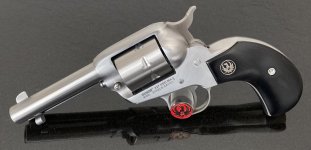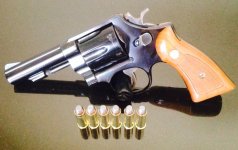Barnes COTW was intended largely as a reference manual, for which use it is excellent. Today there are probably several on-line resources for comparable information, but 40 and 50 years ago COTW was THE resource. Practically a complete reference library on the evolution of cartridge ammunition over the years.
Why all the variants? Some folks (like me) dreamed, schemed, and pondered over the bestest-super-duper-ultimate-whizbang-whatever, and some came up with what we thought would be THE SOLUTION. Couple of my brainstorms were:
-.223/5.56 case necked up to 6mm, shooting 90-100 grain bullets at ~2500-2600FPS. The rifle was the Interarms Mini-Mark X mauser action, light sporter profile barrel, Weaver lightweight scope mount, 3X scope. Just under 7 lbs., easy to carry all day and good performance on medium game (deer, antelope) out to about 250 yards. I called it the 6X45mm.
-.308/7.62NATO case necked up to .338 shooting a 225-grain RM-FP cast lead gas check bullet at ~2100FPS. Rifle was a Remington 700 short action, light sporter profile barrel, lightweight Weaver scope mount, 4X scope. Just over 7 lbs., easy to carry in the mountains chasing elk in the 450-700 lbs. range. I called it the 8.5X51mm.
The 6mm idea is very similar to a half-dozen others that came along after my experiments of the 1980s. The 8.5X51 was eventually standardized as the .338 Federal (although they forgot to mention my earlier efforts).
I also played around with the wildcat .38/45, a 1911-style pistol using a .38 Super barrel rechambered to take the .45ACP case necked down to 9mm/.357 bullets. Moderately popular in the 1970s.


